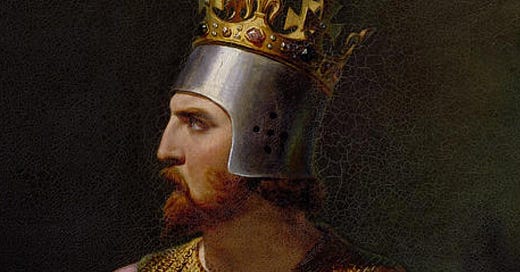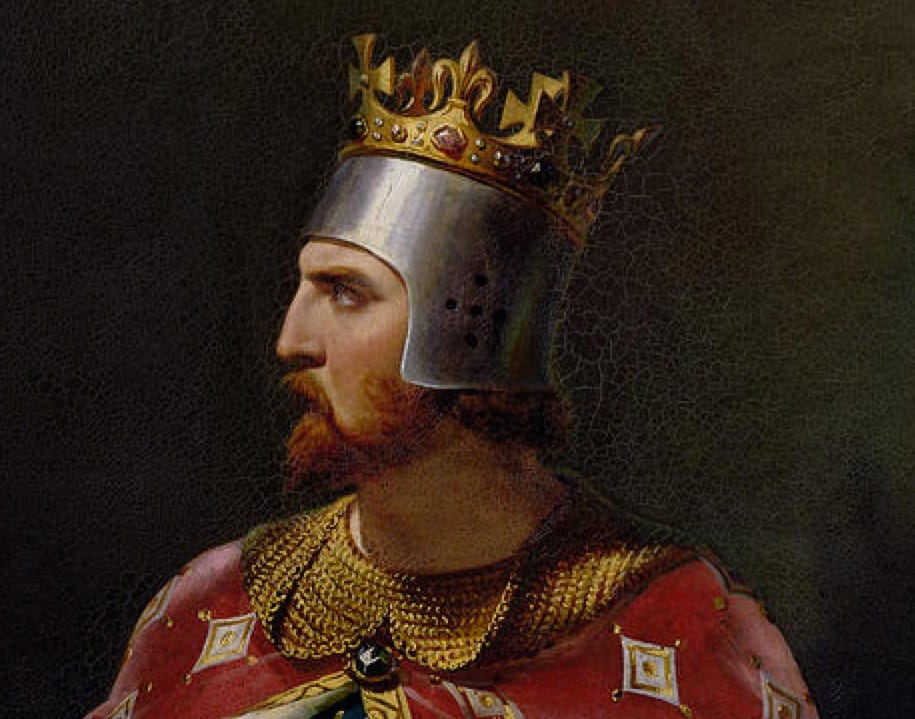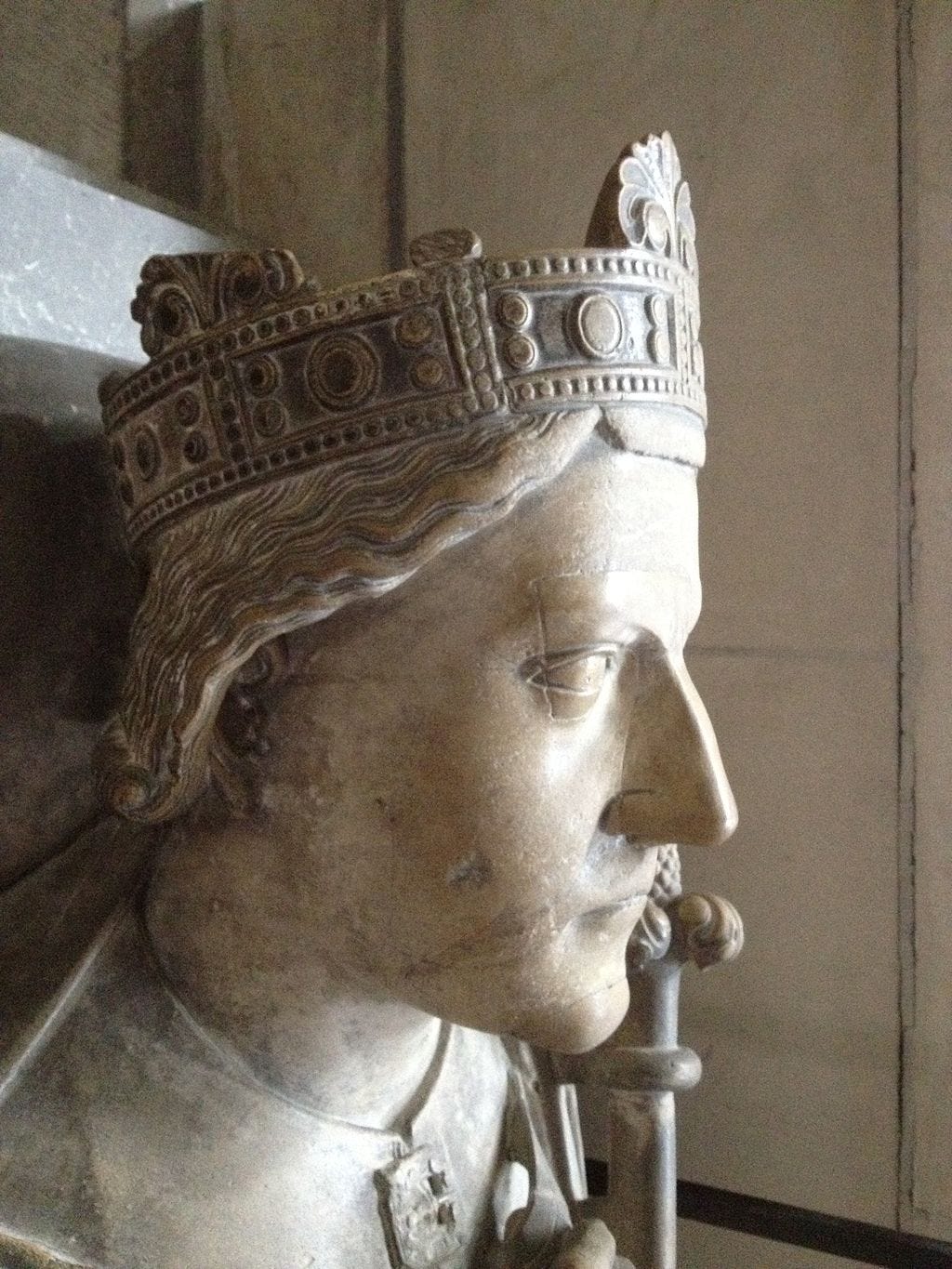I’m traveling to the Mediterranean this fall with wife and friends. We’ve been reading relevant books to get ready and excited. Mary Renault’s The King Must Die; Barry Strauss’ The Trojan War; Pompeii by Robert Harris; The Tomb of Agamemnon by Cathy Gere, and somewhat tangentially, Sharon Kay Penman’s Lionheart. This last because our cruise will stop in Messina, in Sicily, much as Richard’s Crusade to the Holy Land stopped along the way.
(I’m going to start each post with a sampling of music from Richard’s time. Go ahead, push that play button while you read.)
Who has not heard of Richard the Lionheart? I’ve long had an interest in the medieval era, but Richard has always been a bit off-stage for me. I grew up on tales of Robin Hood and his allegiance to the absent King Richard, as Robin fought with his brother John, and his evil henchman, the Sheriff of Nottingham. And yet, as much as he’s been hovering around my reading, I’ve never read much (anything?) specifically around his history. Penman is my starting place.
Richard is a fascinating character. Warlike, yet pious in his way. Religious, but capable of what we would today call horrific war crimes. Hot tempered and impetuous, but a careful logistical planner. Musical, chivalric and courtly. The leader of the Third Crusade to the Holy Land. The King of England, who rarely set foot in England and spoke little or no English, preferring Normandy and the Aquitaine, where he grew up with his mother Eleanor of Aquitaine, essentially banished there due to conflict with his father, Henry II. Henry was famously portrayed on screen by Peter O’Toole in The Lion in Winter, that fabulous but not-entirely-historically-accurate movie, also starring Audrey Katherine Hepburn as Eleanor, and Anthony Hopkins as our hero. He was also Duke of Normandy, Aquitaine and Gascony, Lord of Cyprus for a time, and Count of Poitiers, Anjou, Maine, and Nantes.
Richard was famously brave, hence his nickname. Historical accounts nearly always show him in the vanguard of the fighting, often foolhardily so, and often leading attacks with 10 or 20 men against larger forces. He was also apparently nearly invincible in personal combat. During his entire campaign in the Holy Land, and in spite of being in the thick of nearly every major battle, he never suffered a wound of any consequence. Quite improbable, actually. Amazing even. The histories do not really account for how he acquired such prowess in battle.
Also nicknamed Richard Oc-e-Non (“Richard Yes and No” in Occitan, the language of Aquitaine at the time), apparently due to a reputation for terseness. For myself, I think it was not because he was terse, but because he had a dislike of ambiguity. Richard also had a reputation as an impetuous leader. And in battle, that was certainly so. Yet, a campaign to the Holy Land was no small undertaking. The logistical challenges were enormous, and recent studies have shown that Richard was also a careful and cautious planner.
More recently, he is sometimes referred to as "Richard of the Last Reel," since that's usually when he shows up in Robin Hood movies, according to the BBC's History Extra.
Did you know he wrote songs? Most famous is his lament Ja Nus Hons Pris, written while he was imprisoned by Duke Leopold V of Austria and the Holy Roman Emperor Henry VI, after leaving the Holy Land.
This journal will cover my explorations of the world of Richard, to include Richard himself of course, but also his world. The world of knights, Kings, the Crusades, and his fascinating conflict with Saladin. The mythical (?) world of Robin Hood. Smaller things, like medieval swearing and the history of the Troubadors and medieval music. The smallest of details, such as ‘when did velvet come to Europe’. Other things we encounter along the way.
Maybe even the mythical sword of King Arthur, Excalibur!
Want to follow along?






